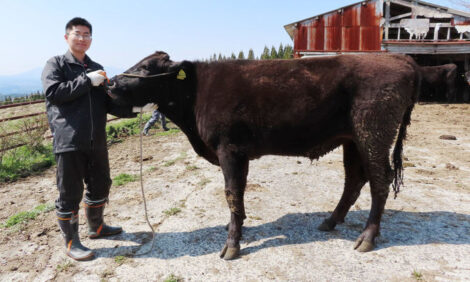



Plan Ahead for Videos in Cattle Abattoirs
UK – A Scottish beef farmer has warned fellow cattle producers that, while they may not currently be penalised for producing out-of spec cattle, videos in abattoirs mean they soon will be.Creating algorithms and records for every carcass graded is now possible through VIA (video image analysis), allowing for a more accurate classification, the Beef Expo heard at York Auction Centre last week.
Already common practice in Northern and the Republic of Ireland, more English, Welsh and Scottish carcasses could soon be scrutinised by the new technology, said Perthshire-based beef farmer Adrian Ivory.

Having had his cattle go through a VIA system at the local abattoir, he said: “At the moment farmers don’t get penalised for producing an out of spec carcass – in the future they will be.”
He stressed VIA means more accurate grading and the ability for farms to get reports back from slaughterhouses.
“There was a time when we used to check when dairy herds were booked in to go to the abattoir,” said Mr Ivory. “The thought was that if our beef cattle followed them, the human eye could be persuaded that our beef cattle looked better so they graded slightly higher than they actually were.”
Those backing VIA say the technology can drive the industry forward by rewarding farmers for specific carcass traits to suit different markets.
Also an arable producer, Mr Ivory is well-versed in deductions or rejections for low bushel weight wheat, nitrogen levels in barley, small potatoes –he thinks cattle should be no different.
Records are kept for every carcass graded, information is fed back to farmers and every fat class if split into a positive and a negative, allowing twice the accuracy.
Mr Ivory’s cattle have been going through the Perth abattoir where VIA has been in place now for 12 months.
This is according to Seth Wareing, ABP’s agriculture manager, who has noted big disparities on strip loin size alone.
“In terms of strip loin, there can be a 10 kilo spread in carcass weight but striploin can be 6 kilos or 9 kilos,” said Mr Wareing. “That’s a variation of around three kilos.”
He reassured that manual graders are on hand should any problems with equipment arise.
“If the machine faults, the carcass is still manually graded and the carcass receives an ‘m’ in brackets.”
More information coming back from the abattoir has informed Mr Ivory to breed long, rather than deep cattle.
Speaking tentatively, Mr Ivory explained that carcasses from his operation with a bigger eye muscle area tended to have a smaller striploin yield.
He suggested more accurate eye muscle measuring would be to measure down rather than across.
“An ideal carcass to produce is for a long striploin, rather than a thin, deep one,” he added. “We should measure eye muscle lengthways, not from top to bottom.”
He pointed to the lack of penalties on in-spec and out-of-spec striploins, even though the gulf in value can vary up to £10/kilos.
Cattle should be bred to be longer to reflect what the VIA is telling the producer, he concluded.
And while future trends in market demands could be different in six months’ time, Mr Ivory asserted that VIA could alert the industry to the changes.
Michael Priestley
News Team - Editor
Mainly production and market stories on ruminants sector. Works closely with sustainability consultants at FAI Farms



